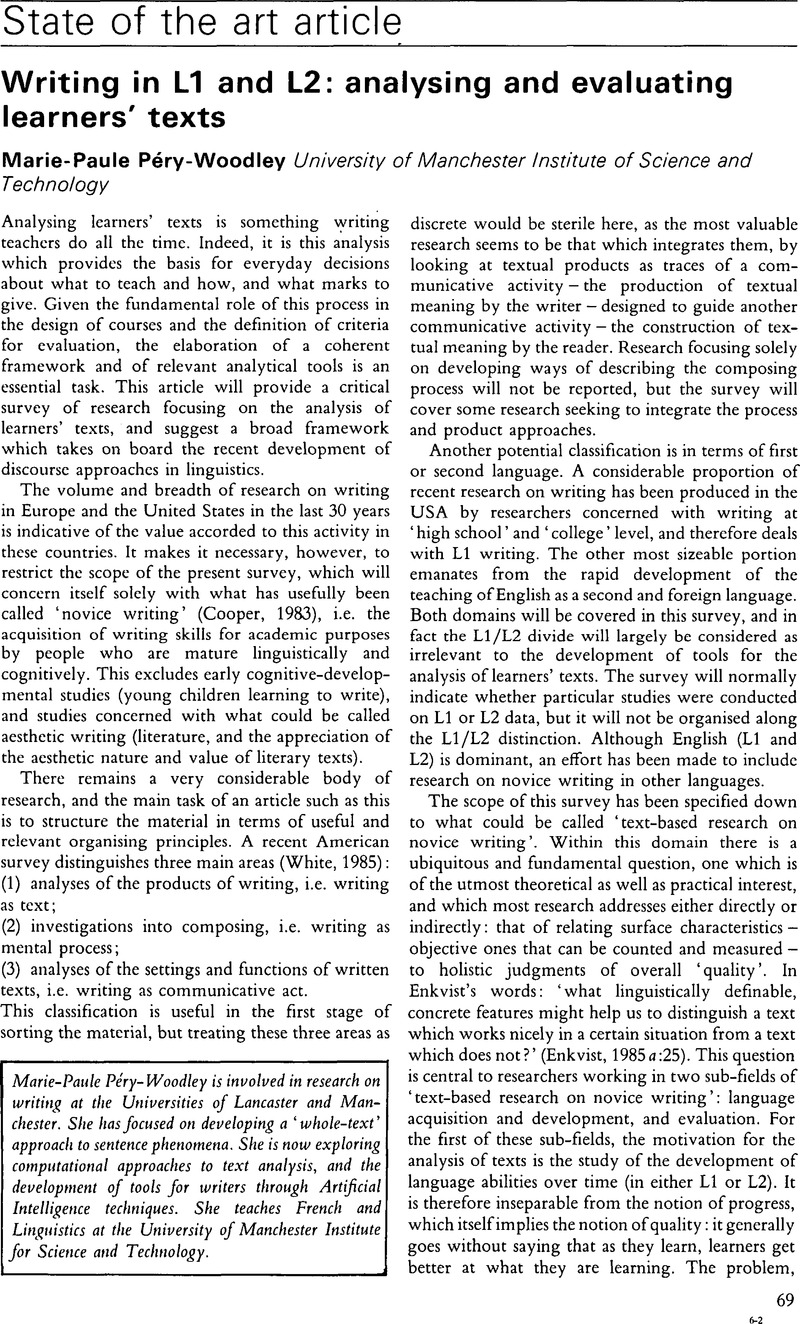Crossref Citations
This article has been cited by the following publications. This list is generated based on data provided by Crossref.
Zanardi, Nicoletta
1994.
Cohesion in Italian adult learners’ and native speakers’ compositions.
Australian Review of Applied Linguistics,
Vol. 17,
Issue. 2,
p.
22.
Ishikawa, Sandra
1995.
Objective measurement of low-proficiency EFL narrative writing.
Journal of Second Language Writing,
Vol. 4,
Issue. 1,
p.
51.
Archibald, Alasdair
and
C. Jeffery, Gaynor
2000.
Second language acquisition and writing:.
Learning and Instruction,
Vol. 10,
Issue. 1,
p.
1.
Bacha, Nahla
2001.
Writing evaluation: what can analytic versus holistic essay scoring tell us?.
System,
Vol. 29,
Issue. 3,
p.
371.
Rajab, Hussam
2013.
Developing Speaking and Writing Skills of L1 Arabic EFL Learners through Teaching of IPA Phonetic Codes.
Theory and Practice in Language Studies,
Vol. 3,
Issue. 4,
Alexander, Olwyn
2019.
The contribution of Halliday to EAP writing instruction: A personal journey.
Journal of English for Academic Purposes,
Vol. 41,
Issue. ,
p.
100769.





